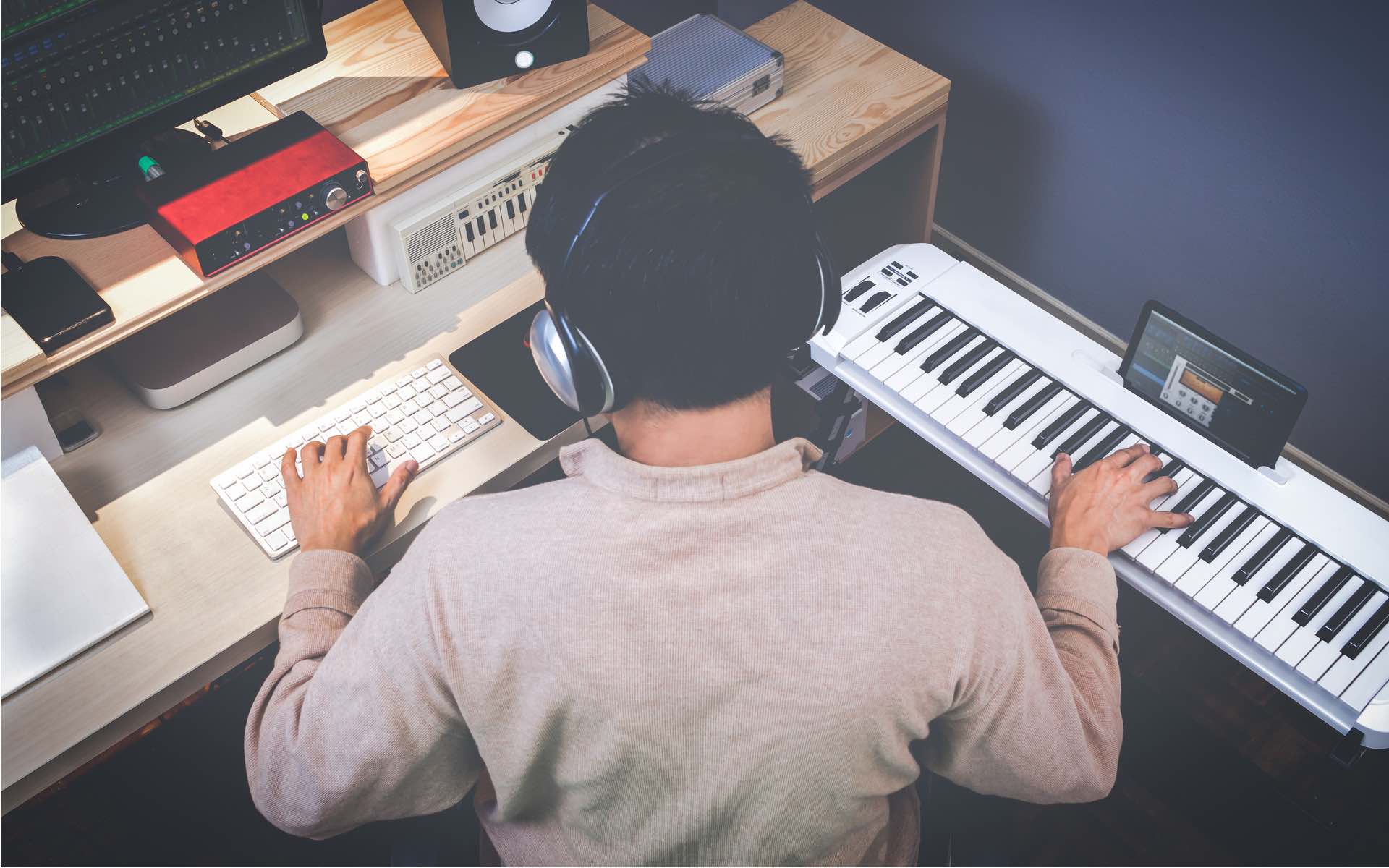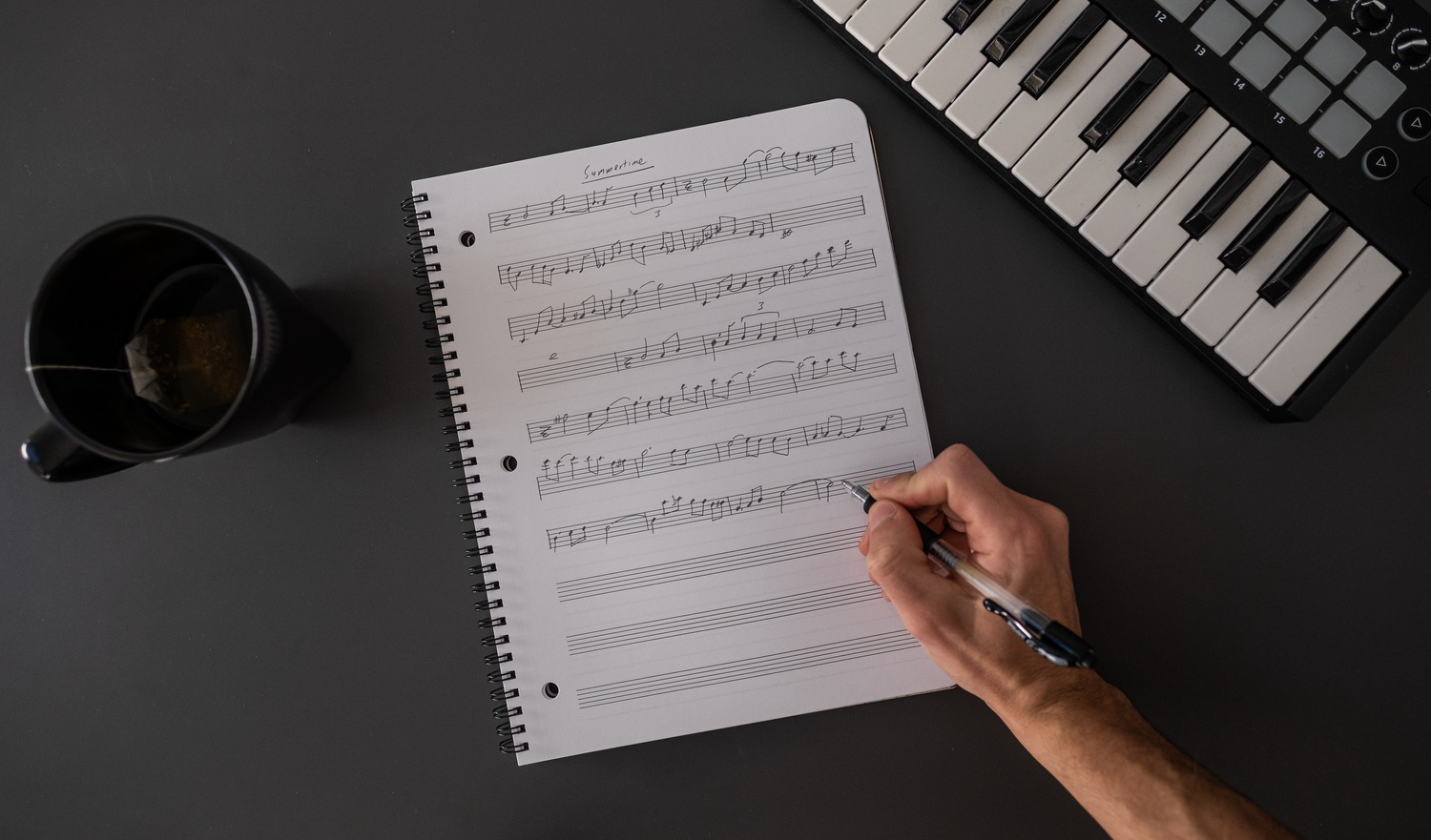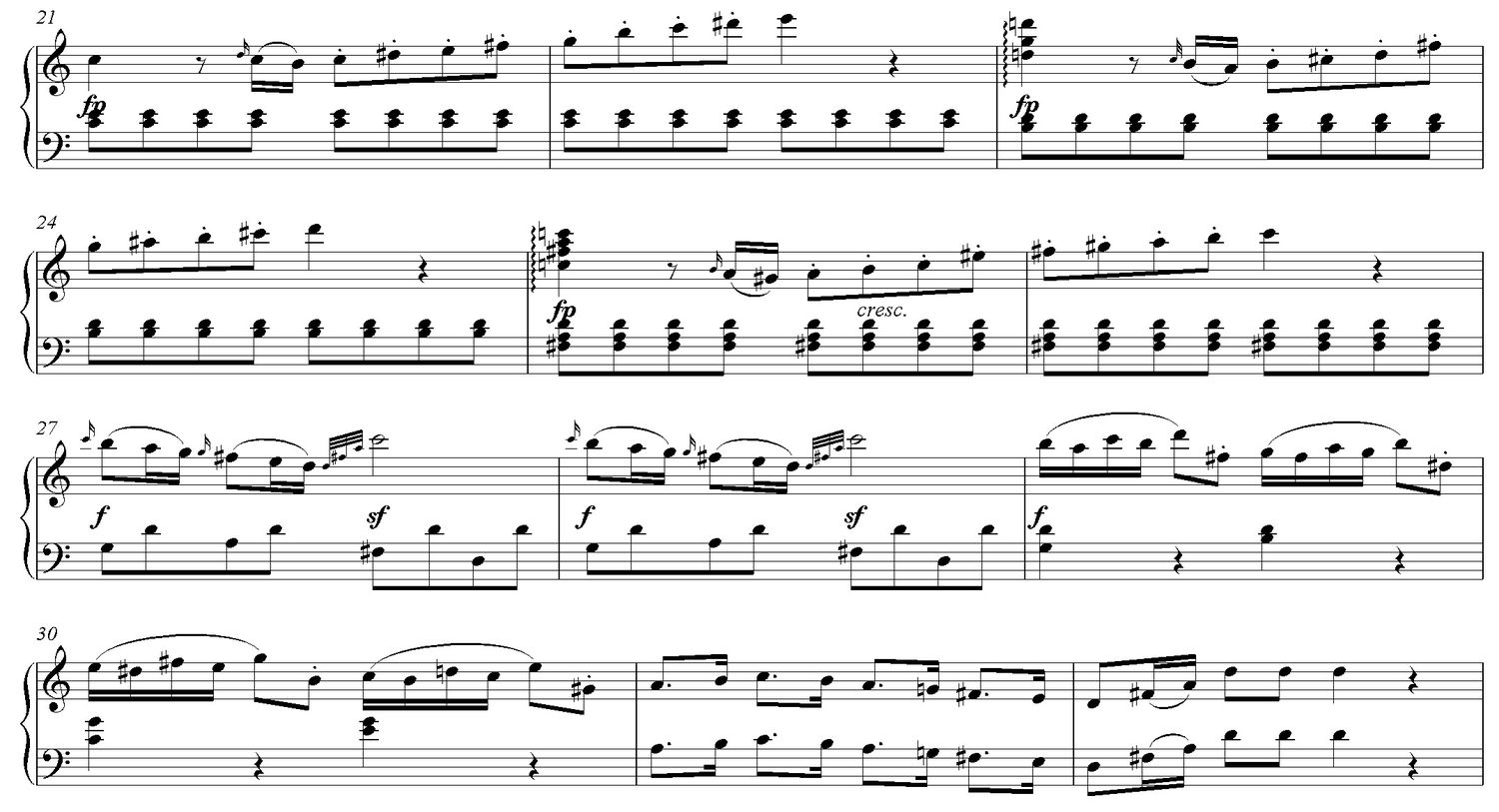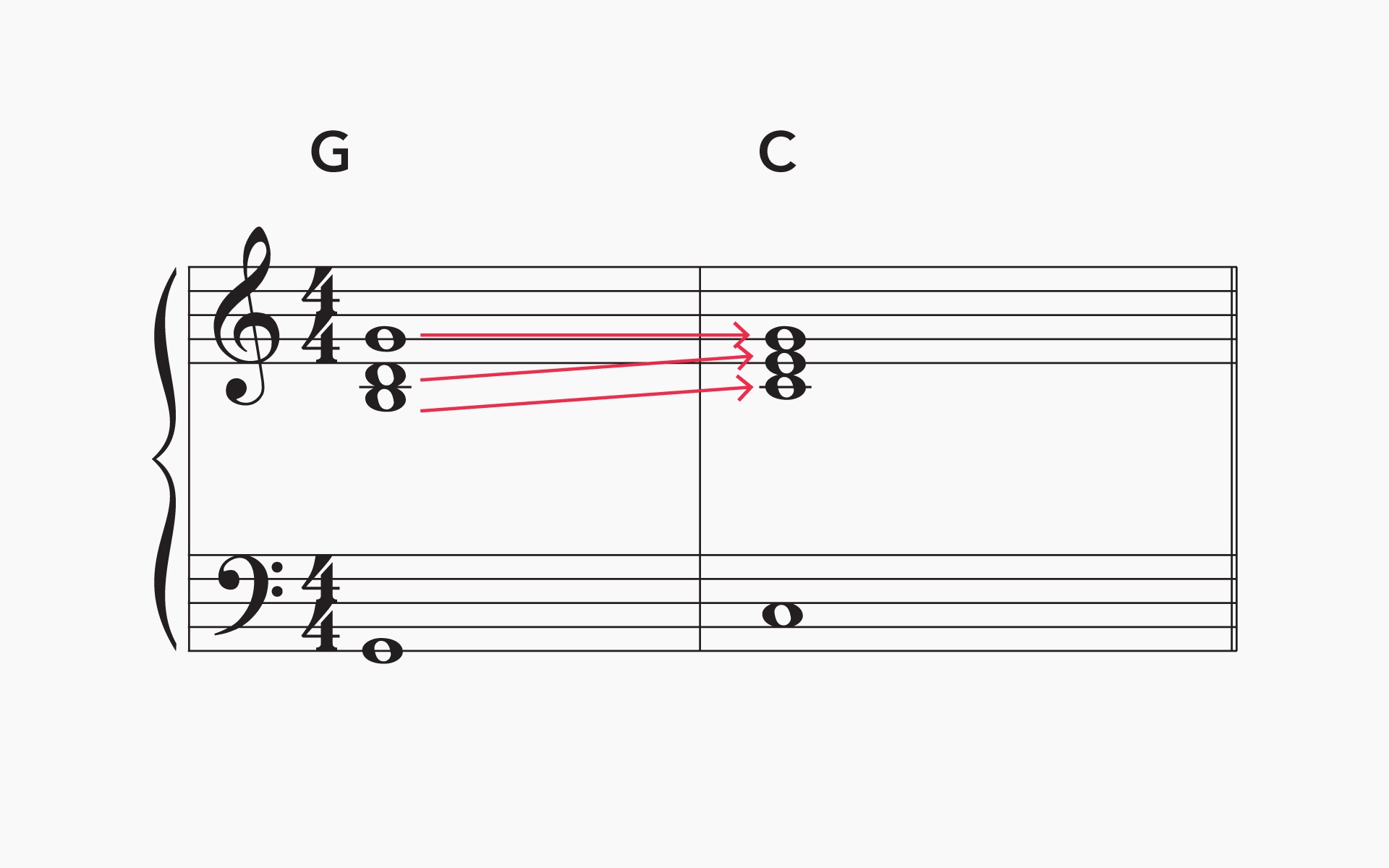Home>Production & Technology>Music Theory>How To Use Ties In Music Theory


Music Theory
How To Use Ties In Music Theory
Published: January 30, 2024
Learn how to incorporate ties in music theory to enhance your compositions and improve your overall understanding of music. Explore various techniques and examples to take your musical skills to the next level.
(Many of the links in this article redirect to a specific reviewed product. Your purchase of these products through affiliate links helps to generate commission for AudioLover.com, at no extra cost. Learn more)
Table of Contents
Introduction
Music theory is the backbone of understanding and interpreting music. It provides musicians with a set of rules and principles that govern melody, harmony, rhythm, and more. One integral concept within music theory is the use of ties, which play a crucial role in shaping the expressiveness and continuity of a musical piece.
Ties, in the context of music theory, are not physical objects but rather symbols used in sheet music to connect two or more notes. They alter the duration of the notes and create a seamless connection between them. Ties can be found in various compositions across different music genres, showcasing their significance in enhancing the overall musical experience.
Understanding the purpose and function of ties is essential for musicians at any level. Whether you are a beginner exploring music theory for the first time or an experienced musician looking to delve deeper into the nuances of composition, this article will provide you with a comprehensive guide on how to use ties effectively.
Definition of Ties in Music Theory
In music theory, ties are symbols used to connect two or more notes of the same pitch, extending their duration. They are represented by an arch-like line that spans between the note heads, indicating that the notes are to be played as a single, uninterrupted sound.
When a tie is used, the notes linked by the tie are not played separately but rather as a single, continuous sound. This means that the musical duration of the tied notes is added together, creating a longer sustained sound.
Ties are notated using curved lines that extend horizontally over or under the note heads. The direction of the curve does not affect the musical meaning but merely serves as a visual preference or to avoid clashes with other symbols on the staff.
It’s important to note that ties can only be used to connect notes of the same pitch. If the pitches of the notes are different, a slur or a different notation technique may be used instead.
The concept of ties may seem straightforward, but their usage carries significant implications for the overall musical structure and interpretation. Understanding the purpose and functionality of ties allows musicians to not only accurately notate and read sheet music but also to convey the desired musical expression.
Purpose and Function of Ties
Ties serve multiple purposes in music theory, and their function goes beyond simply extending the duration of notes. Here are some key purposes and functions of ties:
- Lengthening note duration: The primary purpose of a tie is to connect two or more notes of the same pitch, effectively lengthening their combined duration. By tying notes together, the performer holds the sound for a longer period, creating a smooth and seamless transition between the tied notes.
- Enhancing musical continuity: Ties play a crucial role in maintaining the flow and continuity of a musical piece. Instead of playing separate, disjointed sounds, tied notes create a sense of cohesion, allowing the music to flow naturally from one note to the next.
- Expressive phrasing: Ties can be used to shape the musical phrasing and expressiveness. By tying notes together, musicians can create a legato effect, which is characterized by smooth and connected sounds. This technique enhances the melodic line and adds emotional depth to the music.
- Creating rhythmic interest: Ties can also be used to add rhythmic complexity and interest to a musical piece. By extending the duration of specific notes, the composer introduces rhythmic variations and syncopations, creating intricate patterns and rhythms that capture the listener’s attention.
- Indicating stress or emphasis: The use of ties can also indicate musical stress or emphasis. When a tied note is played, it is given more weight and emphasis than the surrounding notes. This technique can be particularly effective in highlighting important melodic or harmonic moments in the music.
Understanding the purpose and function of ties allows musicians to utilize them effectively in their compositions and performances. By incorporating ties strategically, musicians can shape the overall musical expression, rhythm, and phrasing, creating a more compelling and engaging musical experience for both the performer and the listener.
Notation of Ties in Sheet Music
In sheet music, ties are notated using curved lines that extend horizontally over or under the note heads. These lines connect two or more notes of the same pitch, indicating that they are to be played as a single, sustained sound.
Here are some key points to keep in mind regarding the notation of ties:
- Placement of the tie: Ties can be placed either above or below the note heads, depending on the visual preference or to avoid collisions with other symbols on the staff. The direction of the curve does not affect the musical meaning.
- Tie alignment: When tying multiple notes together, the curve of the tie should typically align with the middle of the note heads. This helps to maintain legibility and clarity in the notation.
- Start and end points: The start and end points of the tie should align with the specific note heads it connects. The tie begins at the first note and travels to the next note, indicating that the duration of both notes is combined.
- Full-measure ties: In certain cases, a tie can span an entire measure, connecting notes of the same pitch across barlines. This tie indicates that the note is to be held for the duration of the entire measure.
- Interaction with other symbols: It’s important to note that ties can interact with other symbols on the staff, such as slurs or articulation markings. In such cases, the ties should be notated in a way that avoids confusion or ambiguity in the interpretation of the music.
Properly notating ties in sheet music is essential for clear and accurate musical communication. Musicians rely on the notation to accurately interpret the intended duration and phrasing of the tied notes. By understanding the notation conventions for ties, musicians can effectively communicate their musical ideas and ensure a consistent interpretation across performers.
Different Types of Ties
In music theory, there are different types of ties that serve specific purposes and have distinct notational characteristics. Understanding these different types of ties allows musicians to accurately notate and interpret the intended musical expression. Here are some common types of ties:
- Regular Tie: The regular tie is the most commonly used type of tie in music notation. It connects two or more notes of the same pitch, extending their combined duration. The regular tie is represented by a curved line that spans horizontally over or under the note heads, indicating that the notes are to be played as a single, sustained sound.
- Tie Over Barlines: A tie can extend over barlines, connecting notes of the same pitch in different measures. This type of tie indicates that the note is to be held for the duration of both measures, creating a seamless transition between them. It is especially useful in cases where the note is longer than a single measure.
- Extended Tie: An extended tie is a variation of the regular tie. It is used when the duration of a note is extended further than what can be notated on a single staff. In such cases, the tie is extended with a diagonal line to connect to a note on a different staff, indicating the continuation of the sustained sound.
- Da Capo (D.C.) Tie: The Da Capo tie is a specific type of tie that signals the return to the beginning of a piece or a specific section. It is denoted by a tie with a circle located at the end, indicating that the performer should go back to the beginning and repeat the music. This tie is often used in conjunction with other repeat markings such as “D.C. al Fine” (return to the beginning and play until Fine) or “D.C. al Coda” (return to the beginning and play until a specified coda section).
Each type of tie has its own unique purpose and notational characteristics, allowing composers and performers to convey specific musical intentions. By understanding the different types of ties and their usage, musicians can accurately notate and interpret the music, bringing the composer’s vision to life.
Lengthening of Note Values with Ties
One of the primary functions of ties in music theory is to lengthen the duration of notes. By connecting two or more notes of the same pitch with a tie, their individual durations are combined, creating a longer sustained sound.
Here’s how ties can lengthen note values:
- Tying Whole Notes: When a tie is used to connect two whole notes (or a whole note and a half note), the duration is extended to the value of both notes combined. For example, if you tie two whole notes together, the resulting note duration is equivalent to a whole note held for two measures.
- Extending Other Note Values: Ties can also be used to lengthen the duration of other note values. For instance, if you tie two half notes together, they become equivalent to a whole note in duration. Similarly, tying two quarter notes would create the duration of a half note.
- Combining Different Note Values: Ties allow for the combination of different note values. For instance, you can tie a half note and a quarter note together to create a rhythm equivalent to three quarter notes. This flexibility in combining note values provides an expansive range of rhythmic possibilities.
- Expanding Duration with Multiple Ties: It is possible to extend the duration of a note even further by using multiple ties. By connecting three or more notes of the same pitch, their durations are accumulated, resulting in a prolonged sustained sound. This technique is particularly useful for creating long, sustained passages in musical compositions.
By employing ties, composers and performers have the ability to manipulate note durations and create unique rhythmic patterns and phrasing. Ties provide a means to extend the musical expression and explore the vast possibilities of rhythm within a composition.
Expressive Interpretation of Ties
While ties serve a practical function of lengthening note values, they also have a significant impact on the expressive interpretation of a musical piece. Ties can greatly enhance the musical expressiveness and shape the overall performance. Here are some considerations for the expressive interpretation of ties:
- Legato Playing: Ties are often used to create a legato effect, where notes are played smoothly and connected. When interpreting tied notes, musicians should strive for seamless transitions between the tied notes, avoiding any breaks or disruptions in the sound. This legato playing enhances the melodic line and provides a sense of flow and continuity.
- Dynamic Shaping: Tied notes can be used as an opportunity to shape the dynamics and phrasing of a musical passage. By starting softly and gradually increasing in intensity over the duration of the tied notes, musicians can create a sense of tension and release. This dynamic shaping adds depth and emotion to the music, allowing for nuanced expression.
- Rhythmic Nuances: Ties can contribute to the rhythmic intricacies of a musical piece. Musicians can experiment with slight variations in the timing and emphasis of the tied notes, adding subtle rhythmic nuances and syncopations. This play with rhythm creates interest and engages the listener, capturing their attention throughout the performance.
- Expressive Conveyance of Melodic Lines: Ties can be used to highlight important melodic lines or motifs within a composition. Musicians should pay attention to these tied notes and emphasize them accordingly, ensuring that the melodic line stands out and is conveyed expressively to the listener. This adds clarity and emphasizes the musical structure.
- Emotional Expression: Ties can evoke different emotions and moods depending on their context within the music. Musicians should explore the emotional possibilities of tied notes, capturing the intended mood whether it is melancholic, serene, or passionate. The expressive interpretation of ties allows musicians to bring the intended emotional depth of the composition to life.
Interpreting ties with expressiveness requires a deep understanding of the musical context and intent. It involves making conscious choices in dynamics, phrasing, timing, and emotional expression. By leveraging the expressive possibilities of ties, musicians can elevate their performances and connect with audiences on a deeper emotional level.
Practical Examples of Using Ties in Music
Ties are a fundamental aspect of music notation and are employed in various ways to enhance the musical expression and create unique rhythmic patterns. Let’s explore some practical examples of how ties are used in different musical contexts:
- Legato Melodies: Ties are often utilized in melodies to achieve a smooth and connected sound. For instance, in a lyrical vocal piece, ties may be used to connect notes of the same pitch, allowing the vocalist to sustain the sound and create a seamless melodic line.
- Extended Sustained Chords: In piano or guitar compositions, ties can be used to create extended sustained chords. By tying the notes within a chord together, the harmonies blend and resonate, producing a rich and lingering sound that adds depth to the overall texture.
- Rhythmic Interest: Ties can be employed to create rhythmic interest and syncopations. For example, in a jazz or Latin music piece, ties may be used to extend the duration of specific notes, creating complex rhythmic patterns that give the music a lively and energetic feel.
- Articulation Enhancement: Ties can also help to enhance articulation in certain musical passages. By tying notes together, the sustain and smooth connection between the notes can provide a distinct expressive effect, particularly in musical genres that demand precise articulation, such as classical or jazz trumpet solos.
- Tempo Variation: Ties can be used to create a sense of tempo variation. For example, in a rubato passage, the performer may use ties to elongate specific notes, slowing down the tempo momentarily to add a sense of expressiveness and flexibility in the interpretation.
These are just a few practical examples of how ties are employed in music. The creative use of ties allows composers and performers to shape the musical structure, add depth and emotion, and create unique rhythmic and melodic patterns. Whether used in classical, jazz, pop, or any other genre, ties play a vital role in enhancing the overall musical experience and expression.
Conclusion
Ties, a fundamental concept in music theory, have a significant impact on the musical expression and continuity of a composition. Understanding their purpose, function, and notation is essential for musicians and composers alike.
Ties serve various purposes, including lengthening note durations, enhancing musical continuity, and creating rhythmic interest. They can be interpreted expressively, shaping dynamics, rhythm, and emotional expression. From legato melodies to extended sustained chords, ties offer a range of creative possibilities in musical composition.
Proper notation of ties in sheet music ensures clear communication and accurate interpretation. Placed above or below note heads, ties link notes of the same pitch, indicating a sustained, connected sound. Considerations for tie alignment and interactions with other symbols allow for precise notation and legible musical communication.
By exploring practical examples of ties in various musical contexts, we see how they contribute to melodic smoothness, rhythmic complexity, and articulation enhancement. Ties offer opportunities for dynamic shaping, tempo variation, and emotional expression, enriching the musical experience for performers and listeners alike.
In conclusion, ties are a vital component of music theory, providing a means to extend note durations, shape musical expression, and create unique rhythmic patterns. Whether used subtly in a delicate melody or prominently in a complex rhythmic passage, ties allow musicians to convey their artistic intent and bring compositions to life.











